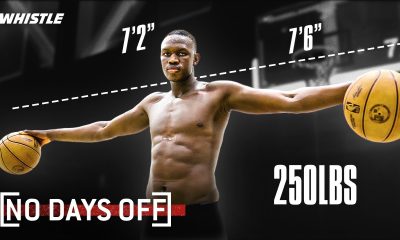Sports
USOPC Announces U.S. Olympic & Paralympic Hall of Fame Class of 2025 Inductees


Courtesy: USOPC
COLORADO SPRINGS, Colo. – The United States Olympic & Paralympic Committee today announced the U.S. Olympic & Paralympic Hall of Fame, Class of 2025, which will be honored and inducted in a special ceremony held Saturday, July 12 in Colorado Springs, Colorado.
Bound by excellence and defined by legacy, the Class of 2025 brings together eight individual Olympic and Paralympic athletes, two teams, two legends, one coach and one special contributor, together representing some of the most celebrated names in Olympic and Paralympic history.
The inductees include Steve Cash (sled hockey), Gabby Douglas (artistic gymnastics), Anita DeFrantz (legend: rowing), Allyson Felix (track and field), Susan Hagel (Para archery, Para track and field, wheelchair basketball), Flo Hyman (legend: indoor volleyball), Kerri Walsh Jennings (beach volleyball), Mike Krzyzewski (coach: basketball), Phil Knight (special contributor: Nike founder), Bode Miller (alpine skiing), Marla Runyan (Para track and field), Serena Williams (tennis), the 2010 Four-man Bobsled Team, and the 2004 Women’s Wheelchair Basketball Team.
SwimSwam Note: Two swimmers, Paralympians Cortney Jordan and Sharon Hetrick, along with legendary swim coach James “Doc” Counsilman, were among the nominees to be inducted.
“We’re proud to welcome the Class of 2025 into the U.S. Olympic & Paralympic Hall of Fame and to honor the extraordinary accomplishments they’ve made as representatives of Team USA,” said USOPC CEO Sarah Hirshland. “This induction celebrates not only their remarkable performances and lasting impact but also acknowledges the essential contributions of those who supported their journeys every step of the way. Earning a place in the Hall of Fame is no small feat—especially given the incredible talent across this year’s group of finalists.”
The Class of 2025 has represented the United States at a combined 42 Olympic and Paralympic Games, earning 51 medals, including 35 golds. This year also marks the introduction of three new sports or disciplines to the U.S. Olympic & Paralympic Hall of Fame: Para archery, represented by Susan Hagel; women’s wheelchair basketball, through the 2004 U.S. women’s team; and women’s rowing, with Anita DeFrantz becoming the first female rower inducted. Additionally, the U.S. men’s four-man bobsled team becomes the first bobsled team honored, and Steve Cash makes history as the first individual sled hockey player selected in the Paralympian category.
National Governing Bodies, alumni, current athletes and additional members of the Olympic and Paralympic community were invited to nominate eligible athletes. From there, a nominating committee comprised of individuals from the Olympic and Paralympic Movement narrowed down the pool of nominees to a set of finalists. The Class of 2025 was determined by a voting process that includes Olympians and Paralympians, members of the U.S. Olympic and Paralympic family and an online vote open to fans. The U.S. Olympic & Paralympic Hall of Fame was one of the first national sports halls of fame to include fan voting as part of its selection process, and this year, nearly 300,000 votes were cast across all platforms.
This will be the 18th class inducted into the U.S. Olympic & Paralympic Hall of Fame, bringing the total to 210 inductees (individuals and teams). The first class was inducted in 1983, and the most recent class was inducted in 2022. Find the entire list of Hall of Fame inductees here. The weekend will also feature the 2025 U.S. Olympic & Paralympic Museum’s Festival, taking place July 10-13 in Colorado Springs, known as Olympic City USA. The festival will feature athlete meet and greets, free access to the USOPM, and special events including the Festival Kickoff Celebration, Community Movie Night, and more – all celebrating the legacy of America’s greatest athletes. Learn more at usopm.org/hof.
The distinguished class of 2025 includes:
Steve Cash (Paralympian: sled hockey – 2006, 2010, 2014, 2018) Steve Cash is a legendary figure in sled hockey, celebrated as a three-time Paralympic gold medalist and five-time world champion. Widely regarded as one of the greatest goaltenders in the sport’s history, Cash made history at the Vancouver 2010 Paralympic Winter Games by becoming the only goalie ever to record five shutouts in a single tournament. He holds virtually every major goaltending record in sled hockey, both for Team USA and internationally, including most minutes played, highest save percentage, and the second-lowest goals-against average. Off the ice, Cash continues to shape the future of the sport through coaching and mentorship. He has developed specialized training programs for sled hockey goaltenders and remains deeply committed to nurturing the next generation of athletes. He is a passionate advocate for mental health, working to break down the stigma surrounding psychological challenges among elite athletes.
Gabby Douglas (Olympian: artistic gymnastics – 2012, 2016)
Gabby Douglas made history at the Olympic Games London 2012, becoming the first Black woman to win the all-around gold medal in gymnastics. A trailblazer and two-time Olympic team gold medalist (2012, 2016), Douglas also contributed to two world championship team titles, earning a total of six medals across the Olympic and world stages. She was the first U.S. gymnast to capture gold in both the all-around and team competitions at a single Olympic Games—a feat she achieved in London—and is one of only two American women to win back-to-back Olympic team golds. At just 16 years old, Douglas broke barriers and redefined what was possible in the sport. Her groundbreaking achievements helped pave the way for future generations of gymnasts, including Simone Biles, who would go on to continue her legacy of excellence and representation on the global stage.
Anita DeFrantz (Legend: rowing 1980, 1984)
Anita DeFrantz made history at the Olympic Games Montreal 1976, winning bronze in the inaugural women’s eight event and becoming the first—and still the only—Black woman to earn an Olympic medal in rowing. Her trailblazing legacy extends far beyond the water, however, and in 1986, she became the first African American and first woman elected to the International Olympic Committee, breaking barriers at the highest levels of sport governance. DeFrantz played a pivotal role as vice president of the Los Angeles 1984 Olympic Organizing Committee, helping to deliver one of the most financially and operationally successful Games in Olympic history. For her unwavering commitment to the Olympic Movement, she received the prestigious Olympic Order in 1980, and in 2024, was honored with the NCAA President’s Gerald R. Ford Award. Through two decades of leadership at the LA84 Foundation, DeFrantz has expanded access to sport for underserved youth across Los Angeles, cementing her impact on both the sport of rowing and the broader Olympic and Paralympic Movement.
Allyson Felix (Olympian: track and field – 2004, 2008, 2012, 2016, 2020)
Allyson Felix is the most decorated athlete in the history of track and field, amassing 31 medals across the Olympic Games and world championships. Over the course of five consecutive Olympic Games appearances, she earned 11 Olympic medals—including seven golds—making her the most decorated female track and field athlete in Olympic history. At the Olympic Games London 2012, Felix captured three gold medals, including anchoring a world-record-setting 4×100-meter relay. She is also a 14-time world champion and holds the record for the most career medals at the World Athletics Championships, with 20 in total. Beyond the track, Felix has become a powerful advocate. She’s been a leading voice for maternity health and gender equity, working to create better pathways for women to succeed in sport, business and family life. In 2024, she was elected to the International Olympic Committee’s Athletes’ Commission and appointed to the USOPC Board of Directors—continuing her legacy of leadership and impact within the Olympic and Paralympic Movement.
Susan Hagel (Paralympian: wheelchair basketball, Para archery, Para track and field – 1976, 1980, 1984, 1988, 1992, 1996)
Susan Hagel is a trailblazer in adaptive sport, having competed in six Paralympic Games across three different sports where she earned four gold and two bronze medals. Over the course of her decorated career, she earned numerous honors, including the prestigious International Wheelchair Basketball Federation Triad Award in 1998. A 16-time All-Tournament Team selection, Hagel was a cornerstone of 14 U.S. national teams, representing her country at the Paralympic Games, Pan American Games and Gold Cup competitions. As a member of the NWBA Hall of Fame committee, Hagel continues to champion opportunities in sport for individuals with disabilities. A role model to women and junior girls in the National Wheelchair Basketball Association, she holds the distinction of having the longest playing career of any woman in her division. Hagel’s legacy is defined not only by her athletic achievements but also by her unwavering dedication to the growth and inclusivity of adaptive sport.
Flo Hyman (Legend: indoor volleyball – 1980, 1984)
Hyman led the U.S. women’s volleyball team through the boycott of the Olympic Games Moscow 1980 but stayed with the team to lead them the silver medal in 1984, the first Olympic volleyball medal for the United States. Hyman’s tenure as an Olympic athlete was cut short by both the boycott and her death, but her legacy was solidified in just one appearance at the Olympic Games in 1984. After the Olympic Games Los Angeles 1984, she went to play professionally in Japan. Hyman is often credited with the rise of women’s volleyball in America. In 1987, National Girls and Women in Sports Day began and, in the beginning, NGWSD served as a remembrance of Hyman who passed away in 1986. After the 1984 Games, she advocated for women’s sports and testified on Capitol Hill on behalf of strengthening Title IX. This work helped pave the way for the success of women on the Olympic and Paralympic stages today.
Kerri Walsh Jennings (Olympian: volleyball – 2000, 2004, 2008, 2012, 2016)
Kerri Walsh Jennings is one of the most decorated athletes in beach volleyball history. A three-time Olympic gold medalist (2004, 2008, 2012) and bronze medalist (2016), she holds the record for the most career victories in both international and domestic beach volleyball, with 135 wins. A three-time world champion (2003, 2005, 2007), Walsh Jennings also set records for the most consecutive match wins (112) and tournament wins (19). Alongside longtime partner Misty May-Treanor, she achieved an unprecedented 21 consecutive Olympic match victories across three Olympic Games. Walsh Jennings’ resilience, dominance and dedication have left an enduring legacy in the sport of beach volleyball and beyond. Despite undergoing five shoulder surgeries, she returned to win the Rio Grand Slam in 2016. In one of her most memorable feats, she competed at the Olympic Games London 2012 while five weeks pregnant.
Mike Krzyzewski (Coach: basketball – 2009, 2012, 2016)
Widely known as “Coach K,” Mike Krzyzewski is one of the most accomplished and respected figures in basketball history. As head coach of the U.S. Men’s Olympic Basketball Team, he led the program to three consecutive Olympic gold medals (2008, 2012, 2016), and six overall golds as head coach of the U.S. Men’s National Team. His international coaching résumé also includes silver at the 1987 World University Games, bronze medals at the 1990 and 2006 FIBA World Championships, and gold at the 2007 FIBA Americas Championship, 2010 FIBA World Championship, and 2014 FIBA World Cup. He played a pivotal role in restoring Team USA’s dominance on the world stage, taking over after bronze in 2004 and leading the “Redeem Team” to Olympic gold at Beijing 2008. Under his leadership, Team USA reestablished itself as a global powerhouse. During his 42-season tenure at Duke University, he guided the Blue Devils to five NCAA championships and a record 13 Final Four appearances—the most in NCAA men’s basketball history. A three-time Naismith College Coach of the Year, he remains the winningest coach in NCAA Division I men’s basketball history. A graduate of West Point, Krzyzewski served in the U.S. Army from 1969 to 1974, reaching the rank of Captain before beginning his legendary coaching career.
Phil Knight (special contributor)
As the visionary founder of Nike, Phil Knight has been a transformative force in the world of sport—particularly for Team USA and the realm of track and field. A steadfast partner of USA Track & Field since 1991 and Team USA since 2005, Knight’s impact has been defined by innovation, advocacy and unwavering support for athletes. From selling running shoes out of his car in the early days to building one of the most iconic athletic brands in history, Knight has consistently championed athletes and their pursuit of excellence. Knight’s commitment to sport reflects the very spirit of the Olympic and Paralympic movements. Nike is a proud partner or sponsor of numerous National Governing Bodies, and in 2014, the company signed one of the largest sponsorship deals in sports history at the time—extending its partnership with USA Track & Field for an additional 23 years. Today, Knight and Nike continue to outfit Team USA athletes during the world’s biggest sporting moments, delivering custom-designed gear for Olympians and Paralympians across both the Summer and Winter Games. Through ongoing innovation in performance apparel and global marketing campaigns that spotlight athletes’ achievements, Nike has helped Team USA athletes push boundaries and inspire audiences worldwide.
Bode Miller (Olympian: alpine skiing – 1998, 2002, 2006, 2010, 2014)
Bode Miller is one of the most accomplished alpine skiers in history. He claimed a gold medal in the alpine combined at the Olympic Winter Games Vancouver 2010 and earned three medals at the same Olympic Winter Games, leading Team USA to a record eight alpine medals. Miller’s success spanned multiple world championships, where he won back-to-back double golds in 2003 (giant slalom, alpine combined) and 2005 (downhill, super-G). He also secured two FIS overall world cup titles in 2005 and 2008. Miller is the only U.S. male skier to win world cup races in all five events—downhill, super-G, giant slalom, slalom and combined—accumulating 33 victories. With six Olympic medals, he ranks second behind Apolo Ohno for the most individual Winter Olympic medals by any Team USA athlete. His decade-long success helped propel the U.S. Alpine Ski Team to its most successful era. Since retiring in 2017, Miller has remained deeply engaged in the worlds of sport and innovation, cofounding the ski company Bomber to bring his vision for high-performance gear to life. Committed to giving back, he leads the Turtle Ridge Foundation, which supports youth and adaptive sports through annual fundraising events such as a ski race at Cannon Mountain and a golf and tennis tournament at Tamarack. In 2018, he joined NBC as an alpine skiing analyst for the Olympic Games, sharing his expertise with a global audience.
Marla Runyan (Paralympian: Para track and field – Paralympian – 1992, 1996 | Olympian: track and field – 2000, 2004)
Marla Runyan made history as the first visually impaired athlete to compete in the Olympic Games and remains the only U.S. athlete to have competed in both the Olympic and Paralympic Games. At the Barcelona 1992 Paralympic Games, she achieved remarkable success, winning gold in the 100-, 200-, and 400-meter races as well as the long jump, while also competing in cycling. She added a fifth gold medal at the Atlanta 1996 Paralympic Games with a victory in the pentathlon, along with a silver in the shot put. In 2000, Runyan became the first blind athlete to qualify for the U.S. Olympic team, competing in the 1,500m event in Sydney. In Paralympic sport, Runyan held the women’s T13 400-meter world record for an astounding 29 years, until it was broken in 2024. Over the course of her career, she earned six Paralympic medals—five of them gold—and claimed three national titles in outdoor track and field and three in road 5K events. In 2001, she co-authored her autobiography, No Finish Line: My Life as I See It, offering an inspiring account of her journey. Since 2013, she has continued to make an impact as a teacher and ambassador for the Perkins School for the Blind in Watertown, Massachusetts.
Serena Williams (Olympian: tennis – 2000, 2008, 2012, 2016)
With four Olympic gold medals and 23 Grand Slam singles titles, Serena Williams is widely regarded as one of the greatest tennis players in history. She ranks fifth in all-time career titles and boasts a remarkable 84% win percentage. Williams held the world No. 1 ranking in women’s singles for a total of 319 weeks, finishing as the year-end No. 1 on five occasions. Throughout her storied career, Williams revolutionized women’s tennis, redefining the sport with her unmatched power, athleticism, and mental toughness. Alongside her sister Venus, she helped usher in the power era of the women’s game, setting new standards for excellence. Together, the Williams sisters claimed 14 Grand Slam doubles titles and captured Olympic gold in Sydney 2000, Beijing 2008, and London 2012, becoming the most successful doubles team in Olympic history. From the public courts of Compton to the pinnacle of global sport, Serena Williams’ legacy transcends her records and championships—she remains an enduring symbol of determination, resilience, and inspiration.
2010 Four-Man Bobsled (Olympians: Steven Holcomb, Justin Olsen, Steve Mesler, Curt Tomasevicz)
Team Night Train, the 2010 U.S. four-man bobsled team, made history at the Olympic Winter Games Vancouver 2010 by winning gold and ending a 62-year drought in the event, Team USA’s first Olympic title since 1948. The team earned its medal at the Whistler Sliding Centre, known for its challenging course and infamous Turn 13, where six sleds crashed during the first two runs. Before Vancouver, the team won gold at the 2009 world championships in Lake Placid, marking the first U.S. victory in that event in 50 years and setting the stage for their Olympic triumph. They were later featured on the cover of Sports Illustrated, marking only the second time bobsledding appeared on the magazine’s cover. The four were named Team USA’s Team of the Year in both 2009 and 2010, the first to earn the honor in back-to-back years, a feat not repeated until the U.S. women’s hockey team in 2017 and 2018. Throughout their journey, the team supported pilot Steven Holcomb as he battled and overcame a degenerative eye disease first diagnosed in 2002. The procedure he would go through, C3-R, would eventually be renamed to Holcomb C3-R, marking the first time a medical procedure was named after an Olympic athlete.
2004 Women’s Wheelchair Basketball Team (Paralympians: Susan Katz, Christina Ripp, Renee Tyree, Janna (Crawford) Mizens, Carlee Hoffman-Schwarz, Stephanie Wheeler, Teresa Lannon, Jennifer (Howitt) Browning, Jennifer Warkins, Emily Hoskins, Patty Cisneros Prevo, Jana (Stump) Shelfer)
The U.S. women’s wheelchair basketball team won its first gold medal in 16 years at the Paralympic Games Athens 2004. Christina (Ripp) Schwab and Stephanie Wheeler went on to coach future national teams, Wheeler in 2016 and Schwab in 2024. Both are members of the National Wheelchair Basketball Association Hall of Fame. Six members of the 2004 team (Emily Hoskins, Patty Cisneros Prevo, Carlee Hoffman-Schwarz, Wheeler, Schwab, Jennifer Warkins) returned to win gold again at the Beijing 2008 Paralympic Games, marking the first back-to-back titles for the program. In 2004, the U.S. defeated five-time defending champion Canada in the semifinal and avenged a narrow group-stage loss to Australia with a 56–44 victory in the gold-medal game, setting the stage for continued success in future Paralympic Games.
The U.S. Olympic & Paralympic Hall of Fame Induction Ceremony will take place on Saturday, July 12 in Colorado Springs. For more information on the U.S. Olympic & Paralympic Hall of Fame, visit . Red-carpet arrivals, interviews and the induction awards will be open to the media. Access information will be available soon.
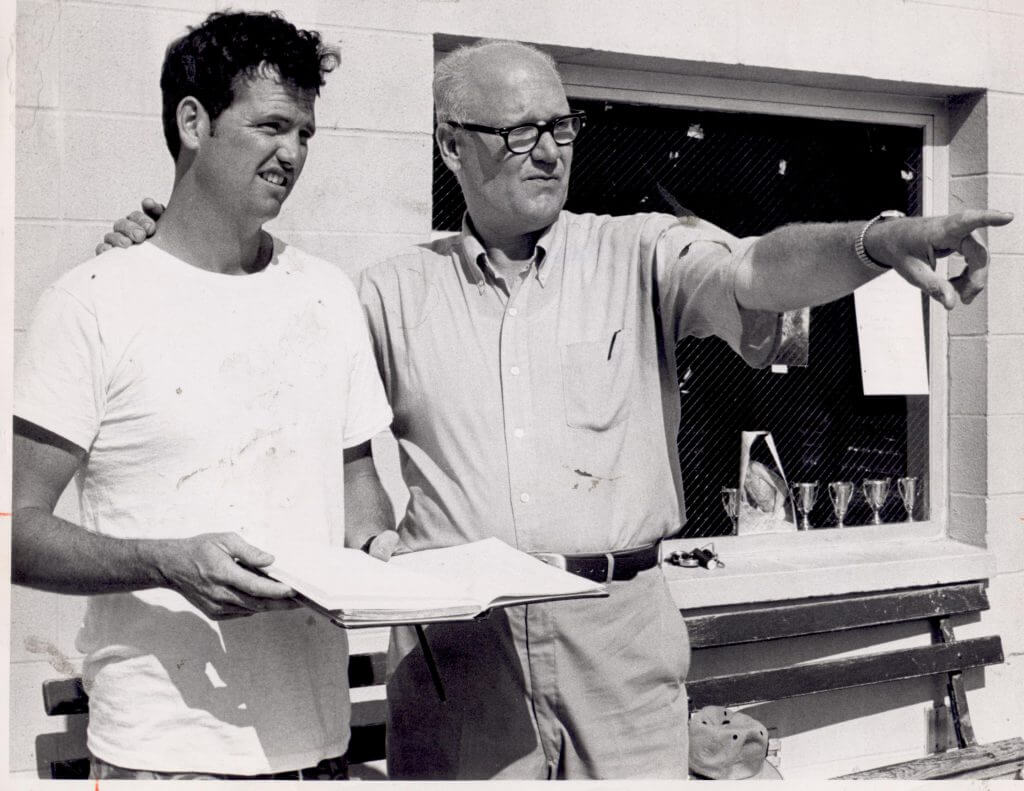
Sports
Men’s and Women’s Indoor Track and Field Open Season at GVSU Holiday Open

ALLENDALE, Mich. – The Kalamazoo College men’s and women’s track and field teams opened indoor season Friday at the GVSU Holiday Open. The competition marked the Hornets’ first track and field meet of any kind since 1980 for men’s, 1981 for women’s, and the first indoor competition since 1939 (men only).
Drew Abbott was the first competitor for Kalamazoo, finishing No. 10 overall and as the top Division III runner in the men’s one-mile run open field at 4:26.08.
In the men’s 400-meter dash, Bram Derksen posted a 53.87-second time, and Elliott Anderson ran his 400m in 55.33.
Allison Mayer became the Hornets’ first official women’s indoor track competitor by running a 10:54.84 3000m. Maya Alkema ran the 5000m in 18:37.56.
On the men’s side in the 5000m, Jack Schneider ran at a time of 15:56.47 and John Lonsway finished at 16:49.87.
Kalamazoo men’s and women’s indoor track and field will travel to Trine for the Sean Brady Invitational after the holiday break on Jan. 17, 2026.
Sports
Nebraska volleyball begins national title chase with win over LIU
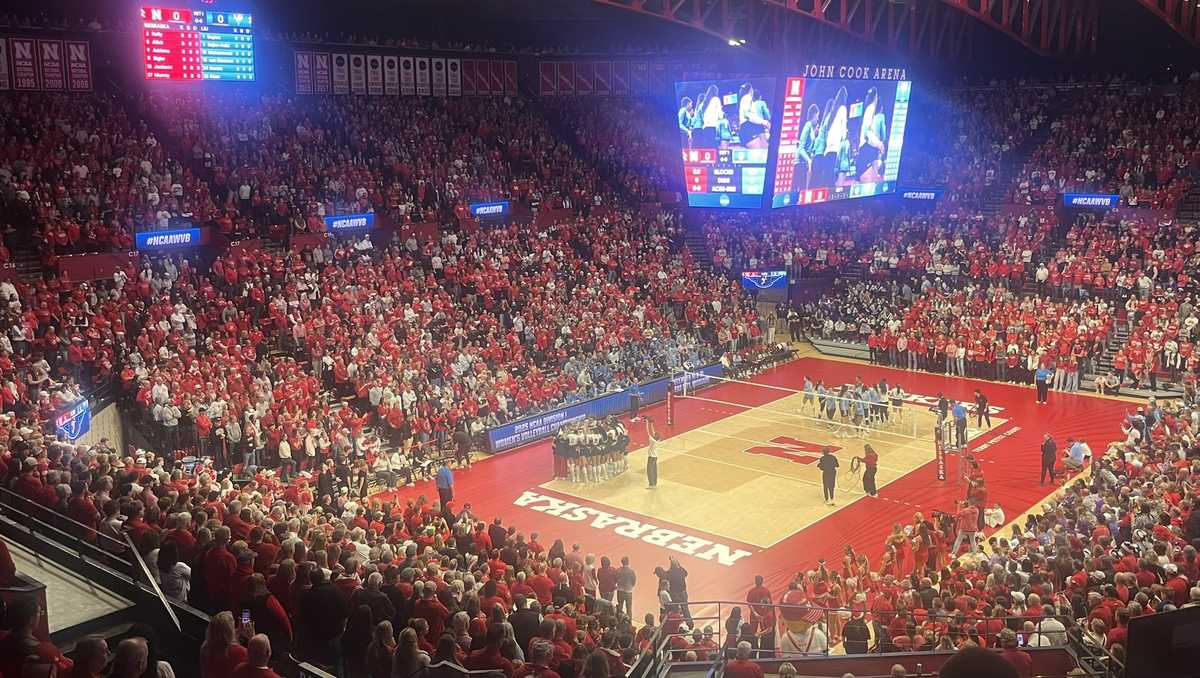
Related coverage in the video aboveNebraska volleyball hosted LIU in the first round of the NCAA Tournament.Bergen Reilly to Andi Jackson and Nebraska was up 6-2.Jackson would later bump Nebraska’s lead to 15-9.A kill from Taylor Landfair ended set 1, giving Nebraska the 25-11 set victory.Rebekah Allick on the block, and it’s 3-0 Huskers in set 2.Allick and Jackson were leading the Huskers by the end of set 2. Nebraska defeated LIU 25-15 in the second set.A 4-0 run for the Huskers kicked things off in set 3.Nebraska was dominating LIU in set 3.Allick claimed match point for Nebraska.The Huskers got the 25-17 set win and the sweep over LIU.The Huskers will face Kansas State in the second round of the tournament on Saturday at 7 p.m.Make sure you can always see the latest news, weather, sports and more from KETV NewsWatch 7 on Google search.NAVIGATE: Home | Weather | Local News | National | Sports | Newscasts on demand |
Related coverage in the video above
Nebraska volleyball hosted LIU in the first round of the NCAA Tournament.
This content is imported from Twitter.
You may be able to find the same content in another format, or you may be able to find more information, at their web site.
Bergen Reilly to Andi Jackson and Nebraska was up 6-2.
This content is imported from Twitter.
You may be able to find the same content in another format, or you may be able to find more information, at their web site.
Jackson would later bump Nebraska’s lead to 15-9.
This content is imported from Twitter.
You may be able to find the same content in another format, or you may be able to find more information, at their web site.
A kill from Taylor Landfair ended set 1, giving Nebraska the 25-11 set victory.
This content is imported from Twitter.
You may be able to find the same content in another format, or you may be able to find more information, at their web site.
Rebekah Allick on the block, and it’s 3-0 Huskers in set 2.
This content is imported from Twitter.
You may be able to find the same content in another format, or you may be able to find more information, at their web site.
This content is imported from Twitter.
You may be able to find the same content in another format, or you may be able to find more information, at their web site.
Allick and Jackson were leading the Huskers by the end of set 2. Nebraska defeated LIU 25-15 in the second set.
This content is imported from Twitter.
You may be able to find the same content in another format, or you may be able to find more information, at their web site.
This content is imported from Twitter.
You may be able to find the same content in another format, or you may be able to find more information, at their web site.
A 4-0 run for the Huskers kicked things off in set 3.
This content is imported from Twitter.
You may be able to find the same content in another format, or you may be able to find more information, at their web site.
Nebraska was dominating LIU in set 3.
This content is imported from Twitter.
You may be able to find the same content in another format, or you may be able to find more information, at their web site.
Allick claimed match point for Nebraska.
The Huskers got the 25-17 set win and the sweep over LIU.
This content is imported from Twitter.
You may be able to find the same content in another format, or you may be able to find more information, at their web site.
The Huskers will face Kansas State in the second round of the tournament on Saturday at 7 p.m.
Make sure you can always see the latest news, weather, sports and more from KETV NewsWatch 7 on Google search.
NAVIGATE: Home | Weather | Local News | National | Sports | Newscasts on demand |
Sports
Track and Field Post Strong Performances at SVSU Holiday Invite
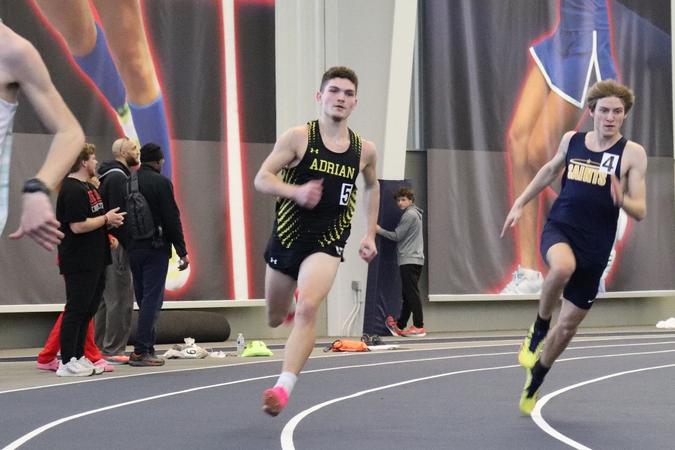
UNIVERSITY CENTER, Mich. – The Adrian College track and field team traveled to Saginaw Valley State University for the Holiday Invite, showcasing strong performances across the board.
On the men’s side, Joseph Sheridan set a personal best in the 400m dash with a time of 51.06, earning 23rd place. In the mile, both Jessie Strickland and Nick Doerr set personal records, with Strickland crossing the finish line in 5:06.00 for 21st place and Doerr finishing 22nd in 5:07.95. Brandon Berry soared to a fifth-place finish in the high jump, clearing 1.94m and cementing his place in the program’s top-10. In the long jump, Ian Chavis claimed 10th with a leap of 6.15m (20-2.25), while Forrest Schroeder posted a solid 12th-place mark at 6.09m (19-11.75).
The women’s team also had notable performances. Abigail Raftis ran the 400m dash in 1:06.36 for 26th place, and Alayna Paeth set a personal best in the 800m with a time of 2:38.94, earning 22nd place. In the high jump, Alysia Townsend cleared 1.57m (5-1.75) to finish sixth. The long jump saw Piper Pierce take 23rd with a mark of 4.63m (15-2.5) and Emily Peterson finish 26th at 4.30m (14-1.25).
Up Next: The Bulldogs are back in action on Saturday, January 17th where they will head back to Saginaw Valley State University. The meet is scheduled to kick-off at 10:00 AM.
Sports
Temple Begins Indoor Track & Field Season at UPenn This Weekend
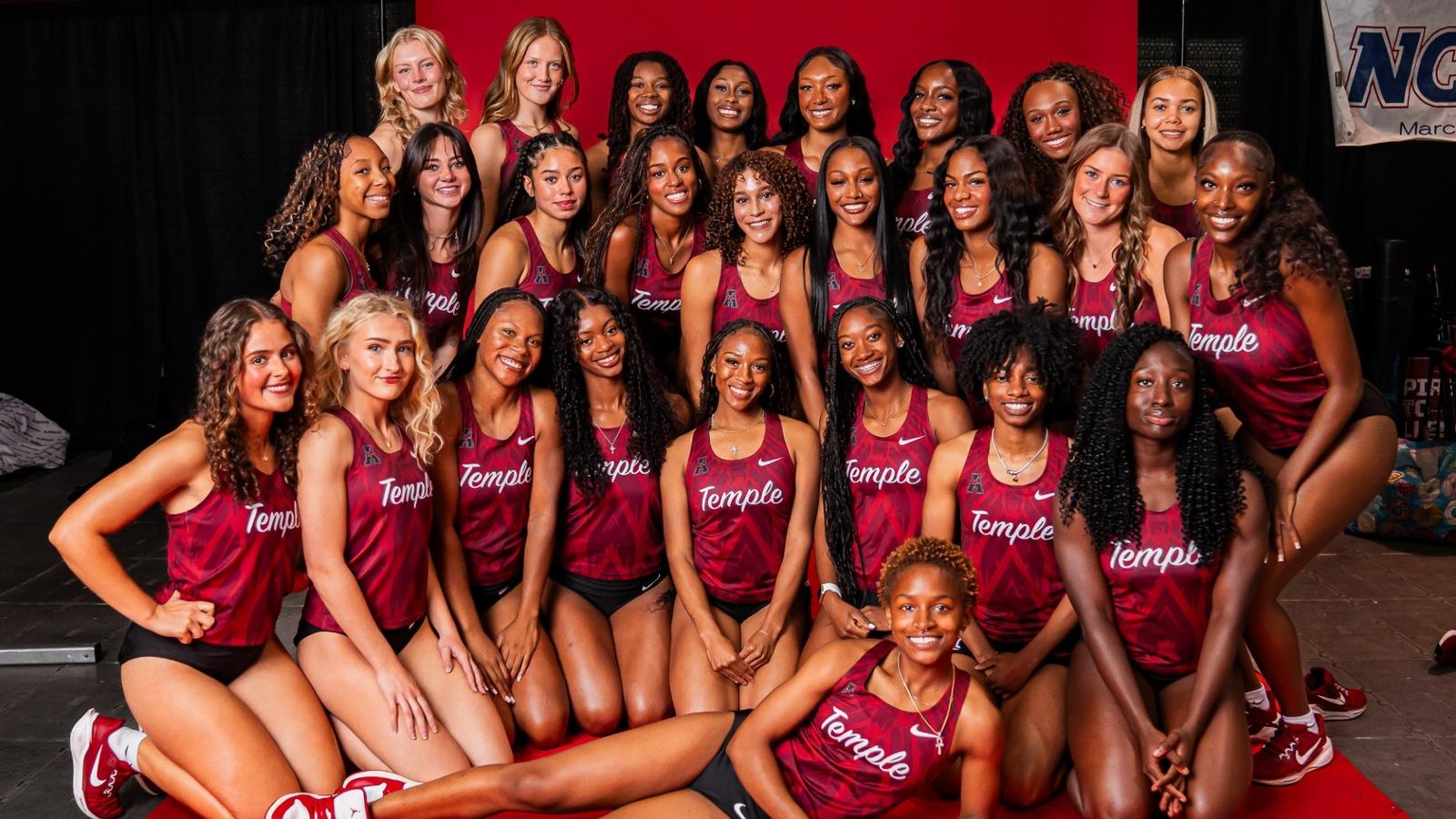
Live Results
Previewing the Owls
- A total of 26 athletes will represent Temple across 11 events this weekend.
- Freshman Emilie Creighton, Aly Doyle, Kei-Mahri Hanna, Rian Johnson, Kenya Merritt, Kamryn Ohm, Janae Pettaway, Smilla Ranebro, and Adama Turay, will make their indoor track and field college debut this weekend.
- Nine Temple athletes will compete in the jumps: Emelie Beckman (pole vault), Doyle (long jump), Ohm (pole vault), Ranebro (high jump), Shalisha Robertson (long jump and triple jump), Reagan Schwartz (long jump and triple jump), Deja Scott (long jump), Inara Shell (long jump and triple jump), and Reece Sullivan (pole vault).
- For the sprints, Zayniah Ali, Pettaway, Turay, and Lila Ziegler will compete in the 60m dash. Also, racing in the 60m hurdles are: Ali, Doyle, and Turay.
- Competing in the 300m dash are Ali, Grace Hickman, Merritt, Pettaway, and Maliah Powell.
- Racing in the 600m are Jayla Green, Hanna, Mariah Jameson, Chole Smith, and Dicia Watkins.
- Laila Cottom and Maya Gomes will represent Temple in the 1,000m race. While, Creighton and Johnson will run the 3,000m race.
- To conclude the meet Temple will race three 4×400 meter relay teams.
Previewing the Field
Other schools that will be competing this weekend are Delaware, Georgetown, Hampton, Rider, St. Joseph’s, Penn, Princeton, Morgan State, and Villanova.
Up Next
Temple will return to the Ott Center to compete at the Penn Select hosted by Penn on Saturday, Jan. 10.
Sports
Women’s Track & Field Sees Positive Performances at SVSU Holiday Open
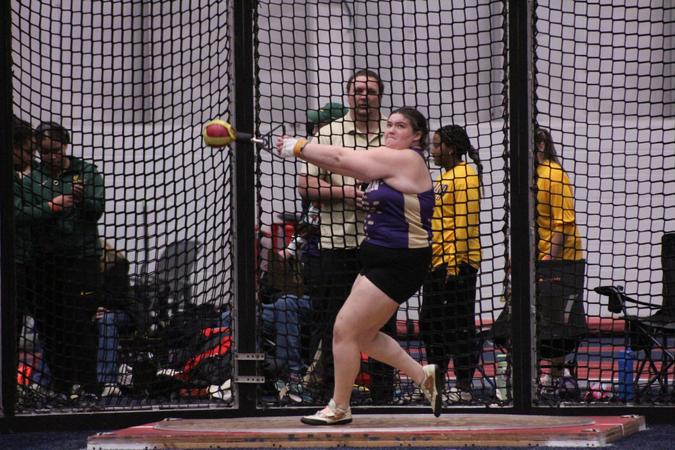
RESULTS
UNIVERSITY CENTER, Mich. –
Three top 10 performances in program history put the Albion track & field team in good spirits at the SVSU Holiday Open.
Performing inside the vast field house with a 300m track, Caragh Dwyer placed 14th in the 400m (1:02.92) that was good enough to earn a top 10 mark in team history.
Maggie Sorrelle leapt for a mark of 2.82m in the pole vault, which was the fourth-best in Albion history and highest since 2020.
In the throws, Morgan Hurd’s 14.81m toss in the weight throw was fourth-furthest in Albion history and tenth overall among the field.
Mia Czarnowski (8.31, PR), Sorrelle (27.66) and Brianna Bennett (1:05.70, PR) were the best finishers for the Britons in the 60m, 200m and 400m, respectively.
Czarnowski posted a 4.77m in the long jump, while Zoey Bennett leapt a 9.45m in the triple jump.
As for other throwers, Kaylee Kopulos notched 10.42m and 12.43m tosses in the shot put and weight throw, respectively.
Up Next
Albion will be back in action during next calendar year, as they will head to Heidelberg’s brand-new indoor track for the Larry Brown Invitational on Friday, January 16.
Sports
USC Women’s Volleyball Falls to Cal Poly in NCAA Second Round Bout
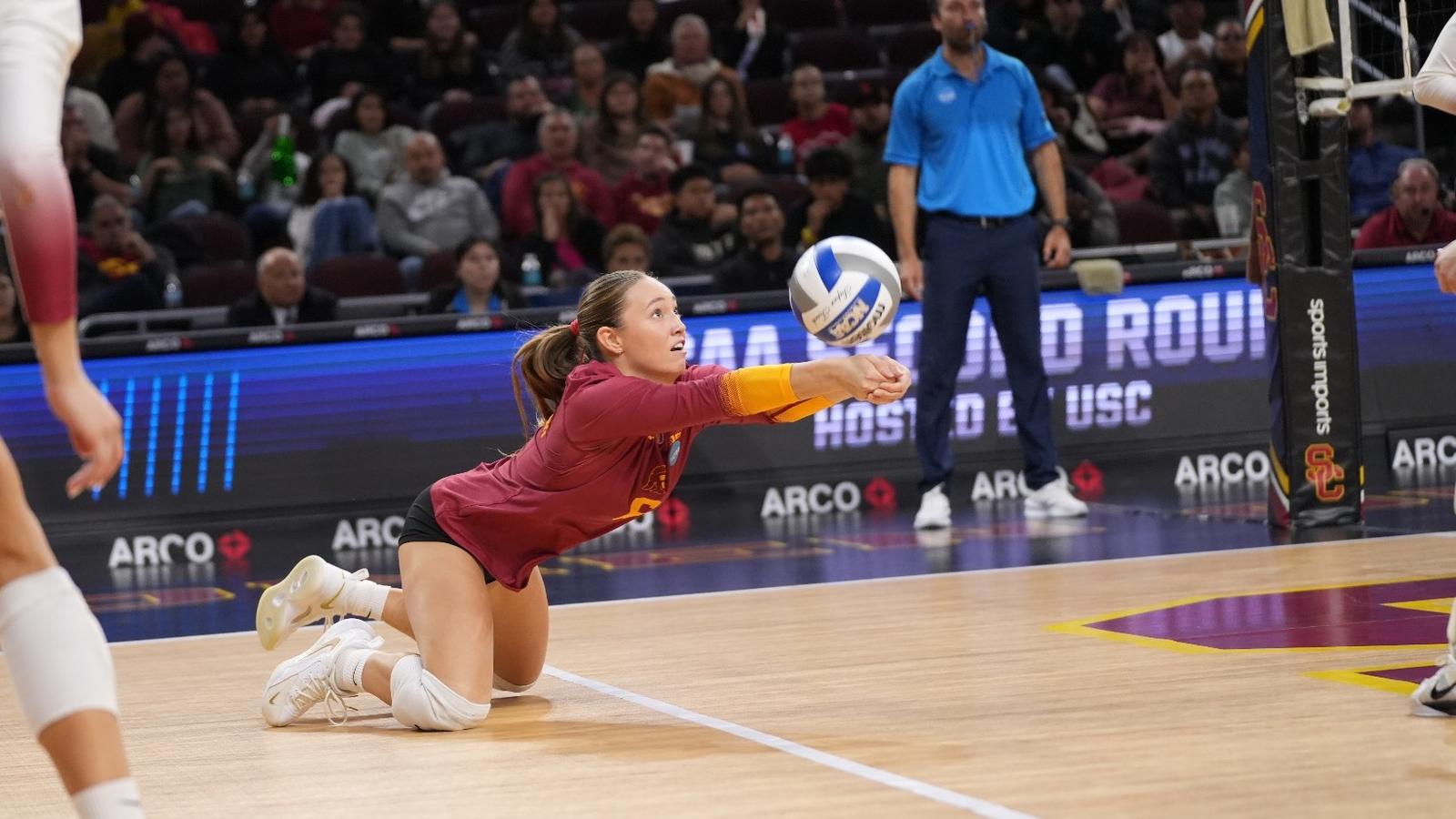
KEY PLAYERS
- Fr. OPP Abigail Mullen led all scorers with 21.5 points earned on a match-high 17 kills (7e, 39att, .256) to go with 10 digs for her eighth double-double. She also had five blocks and two service aces.
- Fr. S Reese Messer put up her 11th double-double with 46 assists and 11 digs. She also added six blocks (one solo) and had three kills on eight swings (.375).
- RS So. OH London Wijay had 10 kills (3e, 38att, .184) and 12 digs for her eighth double-double (17th career).
- RS So. MB Leah Ford had nine kills (1e) on 17 swings to hit .471 and led the team with seven blocks.
- So. MB Mia Tvrdy played just the last three sets but finished with eight kills on 10 swings (.800) and had two blocks, two digs and a two-handed jump-set assist on a kill by Mullen.
- Sr. MB Rylie McGinest had six kills (1e, 13att, .385) to go with one block.
- Fr. LIB Taylor Deckert led the team with 13 digs and added six assists. Sr. LIB Gala Trubint had four digs and a service ace.
- For the Mustangs, Emma Fredrick led with 17 kills and had 17 digs to lead all players. Kendall Beshear and Annabelle Thalken each had 12 kills. Beshear had 14 digs for the double-double and served a pair of aces. Emme Bullis put up 44 assists with 12 digs for a double-double.
HOW IT HAPPENED
- The Mustangs never trailed in the opening frame to grab a 25-19 win. Both teams registered 15.0 points, but the Mustangs committed fewer unforced errors to come out on top. The Trojans had 13 kills with five from McGinest but hit just .146 with seven errors on 41 swings. Cal Poly had just 11 kills but hit .258 and had a 3-1 edge in blocks. Both teams each served an ace, but the Trojans served six errors to the Mustangs’ two in the loss.
- The teams were tied 13 times and the lead changed hands five times before Cal Poly took a 2-0 lead with a 25-20 win in set two. Mullen had five kills to lead the Trojans, but USC totaled just 10 kills and hit .147 in the set. Both teams had three blocks apiece, but the Mustangs still hit .270 with 15 kills (5e) on 37 swings with five more kills from Beshear.
- USC secured a 25-20 set-three win on the second of two service aces from Dani Thomas-Nathan. Tvrdy came in and sparked the Trojans with the first kill of the frame and finished with five on just six swings. Mullen tallied six kills on 12 swings without an error and helped USC hit .326 (18k, 4e, 43att). The Trojans had four blocks to help hold the Mustangs to a .194 attack rate with 10 kills (4e) on 31 swings. USC never trailed and led by five twice before winning by five.
- Back-to-back Mustang errors broke the eighth and final tie of the fourth and put the Trojans in front, 11-9, en route to a 25-14 win. USC continued to push and moved in front by six, 17-11, on a block by Mullen and Ford. Back-to-back kills from Mullen put USC on top by seven, 19-12, and her tool kill made it a 10-point USC lead at 23-13. Mullen and Wijay each scored four kills in the fourth as the Trojans hit .448 (14k, 1e, 29att) and had three blocks to hold Cal Poly to a .081 hitting percentage with 12 kills (9e) on 37 attacks.
- Cal Poly broke a three-all tie in the fifth with a 6-0 run and was never threatened on the way to a 15-7 win to seal the 3-2 win. Beshear had a six-serve run that included a service ace to put the Mustangs on top by six, 10-4. The Trojans could get no closer than within five despite every effort. The Mustangs hit .316 with eight kills (2e) on 19 swings over USC’s .091 rate in the fifth with five kills (3e) on 22 attempts.
MATCH NOTES
- USC fell to 13-6 all-time against Cal Poly. The teams met for the first time since 2012.
- The Women of Troy fell to 15-4 at home this season and to 231-64 (.783) all-time at Galen Center, which includes a 21-5 mark in NCAA tournament matches.
- USC goes to 131-45 (.744) all-time in the postseason with an 85-38 (.691) mark in the NCAA tournament.
- The Trojans fell to 14-11 in the second round of the NCAA tournament.
For more information on the USC women’s volleyball team and a complete schedule and results, please visit USCTrojans.com/WVB. Fans of the Women of Troy can follow @USCWomensVolley on Facebook, X, TikTok, and Instagram.
-

 Rec Sports2 weeks ago
Rec Sports2 weeks agoFirst Tee Winter Registration is open
-

 Rec Sports1 week ago
Rec Sports1 week agoFargo girl, 13, dies after collapsing during school basketball game – Grand Forks Herald
-

 Motorsports2 weeks ago
Motorsports2 weeks agoCPG Brands Like Allegra Are Betting on F1 for the First Time
-
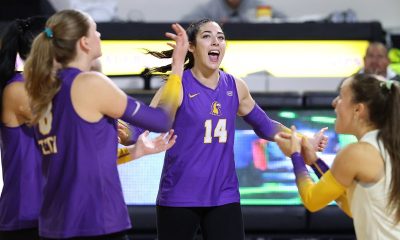
 Sports2 weeks ago
Sports2 weeks agoVolleyball Recaps – November 18
-

 Motorsports2 weeks ago
Motorsports2 weeks agoF1 Las Vegas: Verstappen win, Norris and Piastri DQ tighten 2025 title fight
-

 Sports2 weeks ago
Sports2 weeks agoTwo Pro Volleyball Leagues Serve Up Plans for Minnesota Teams
-

 Sports2 weeks ago
Sports2 weeks agoSycamores unveil 2026 track and field schedule
-

 Sports2 weeks ago
Sports2 weeks agoUtah State Announces 2025-26 Indoor Track & Field Schedule
-

 Motorsports1 week ago
Motorsports1 week agoRedemption Means First Pro Stock World Championship for Dallas Glenn
-

 NIL6 days ago
NIL6 days agoBowl Projections: ESPN predicts 12-team College Football Playoff bracket, full bowl slate after Week 14
















